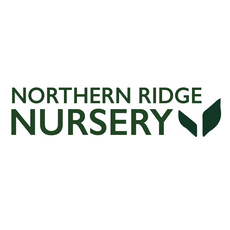Rain Gardens: Eco-Friendly Solutions for Your Yard!
As homeowners seek sustainable ways to beautify their yards while benefiting the environment, rain gardens emerge as a compelling solution. By harnessing the natural power of the ecosystem, rain gardens not only enhance the aesthetic appeal of landscapes but also contribute significantly to environmental conservation. This detailed guide will explore how rain gardens work, the benefits they offer, and practical steps to create your own. Get ready to transform your yard into a vibrant and eco-friendly paradise!
Understanding Rain Gardens
A Rain garden is a shallow, constructed depression designed to capture and filter runoff from impervious surfaces like roofs, driveways, and streets. This innovative landscaping solution mimics natural hydrology by absorbing, cleaning, and returning stormwater runoff to the ground rather than allowing it to storm sewers. Here’s what makes a Rain garden both functional and fascinating:
- Natural Filtration: Rain gardens are filled with Native shrubs, perennials, and grasses that filter pollutants naturally.
Benefits of Installing a Rain garden in Your Yard
Environmental Conservation
One of the most compelling reasons to install a Rain garden is its positive impact on the environment. By capturing stormwater runoff, rain gardens reduce the burden on municipal stormwater systems and mitigate the effects of floods. Moreover, they help in filtering pollutants such as pesticides and nutrients that would otherwise end up in local waterways, thus protecting aquatic ecosystems.
Enhanced Aesthetic Appeal
Rain gardens are not only functional but are also picturesque. By choosing a variety of plants, you can create a vibrant palette of colors and textures that change with the seasons. These gardens can serve as captivating focal points of your yard’s landscape design.
Low Maintenance Requirements
Once established, rain gardens are remarkably low maintenance. Native plants require minimal watering and fertilization, making rain gardens an excellent option for sustainable landscaping.
Designing Your Rain garden
Creating an effective Rain garden requires thoughtful planning and design. Here’s how to get started:
Location Selection
Choose a location at least 10 feet away from your home to prevent any potential water damage to structures. Avoid areas over septic systems or utilities. The site should naturally collect water but be capable of draining it within 24 hours to prevent mosquito breeding.
Size and Shape
The size of your Rain garden depends on the area of the impervious surface it drains. Typically, rain gardens are designed to be about 20-30% of the drainage area’s size. Curved edges and irregular shapes mimic natural landscapes and help integrate the garden with your overall yard design.
Soil Preparation
Soil composition is crucial for the effectiveness of a Rain garden. Ideally, the site should have good drainage. Amending the soil with compost can improve its ability to handle water efficiently.
Plant Selection
Selecting the right plants is critical for the success of your Rain garden. Opt for native plants that are adapted to your local climate and soil conditions. Ensure that plants are appropriate for the wet and dry areas of your Rain garden. Typically, moisture-loving plants are placed at the center, and drought-resistant plants around the edges.
Maintenance Tips for a Thriving Rain garden
To ensure your Rain garden stays healthy and functional, consider the following maintenance tips:
- Regular Weeding: Keep the garden free from invasive species that can outcompete native plants.
Case Studies: Successful Rain garden Projects
Throughout the country, numerous homeowners have successfully implemented rain gardens to address local environmental issues while enhancing their property's appeal. In urban residential areas, rain gardens are increasingly popular for managing runoff and adding green space to properties. Conversely, rural homeowners use rain gardens to maintain the natural landscape and support local wildlife.
Conclusion: Transform Your Yard Today!
Embracing rain gardens offers a unique opportunity to contribute positively to our planet while enjoying the beauty and tranquility they provide. These eco-friendly solutions hold the power to revolutionize home landscaping and play a vital role in urban water management.
If you're inspired to adopt a sustainable approach to landscaping or wish to learn more about integrating a Rain garden into your property, now is the perfect time to start. Shape your space, support your Local ecosystem, and take a definitive step towards environmental stewardship.
Contact us today to explore the best Rain garden designs for your yard and begin your journey towards a sustainable, beautiful outdoor space!










